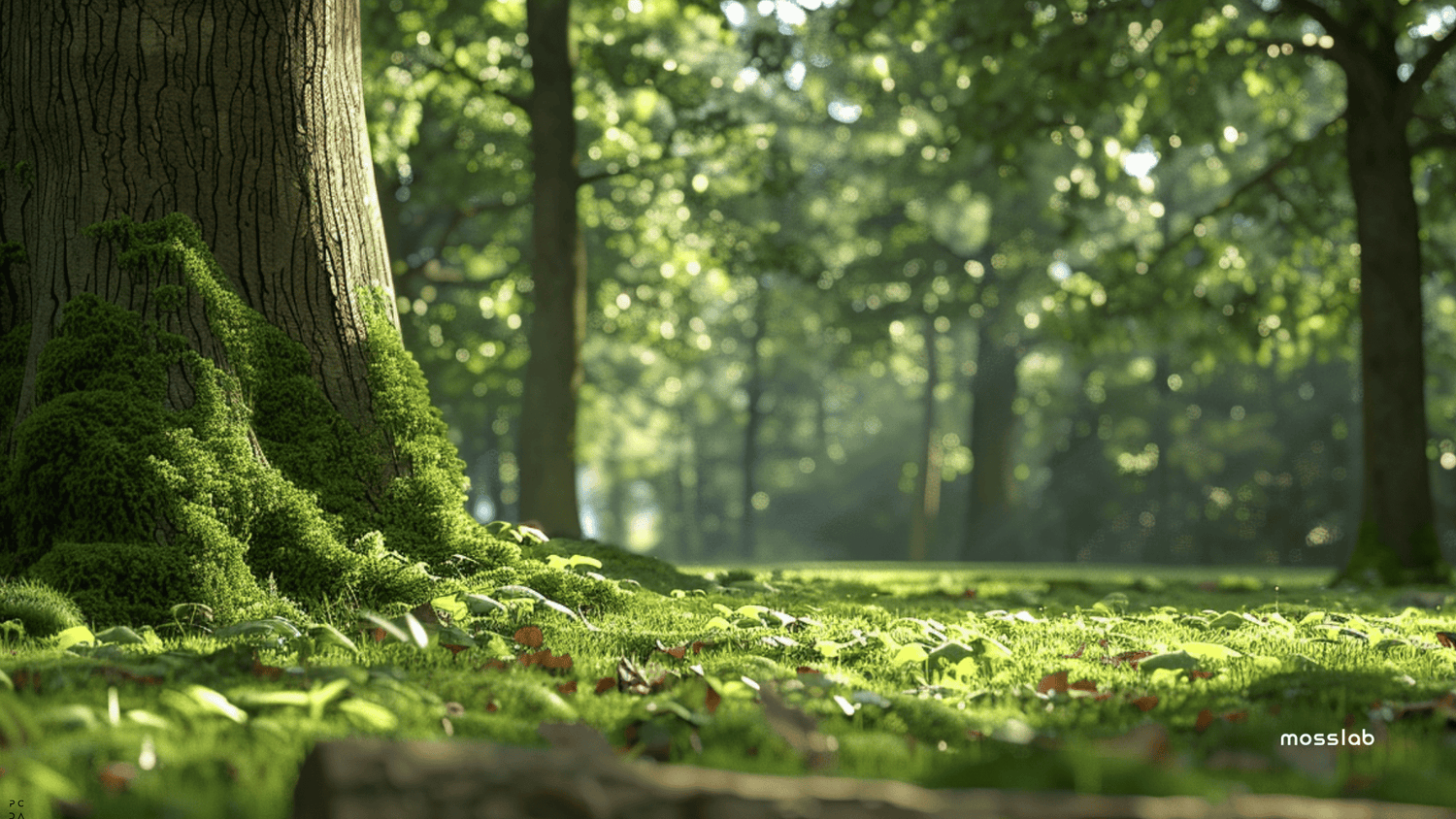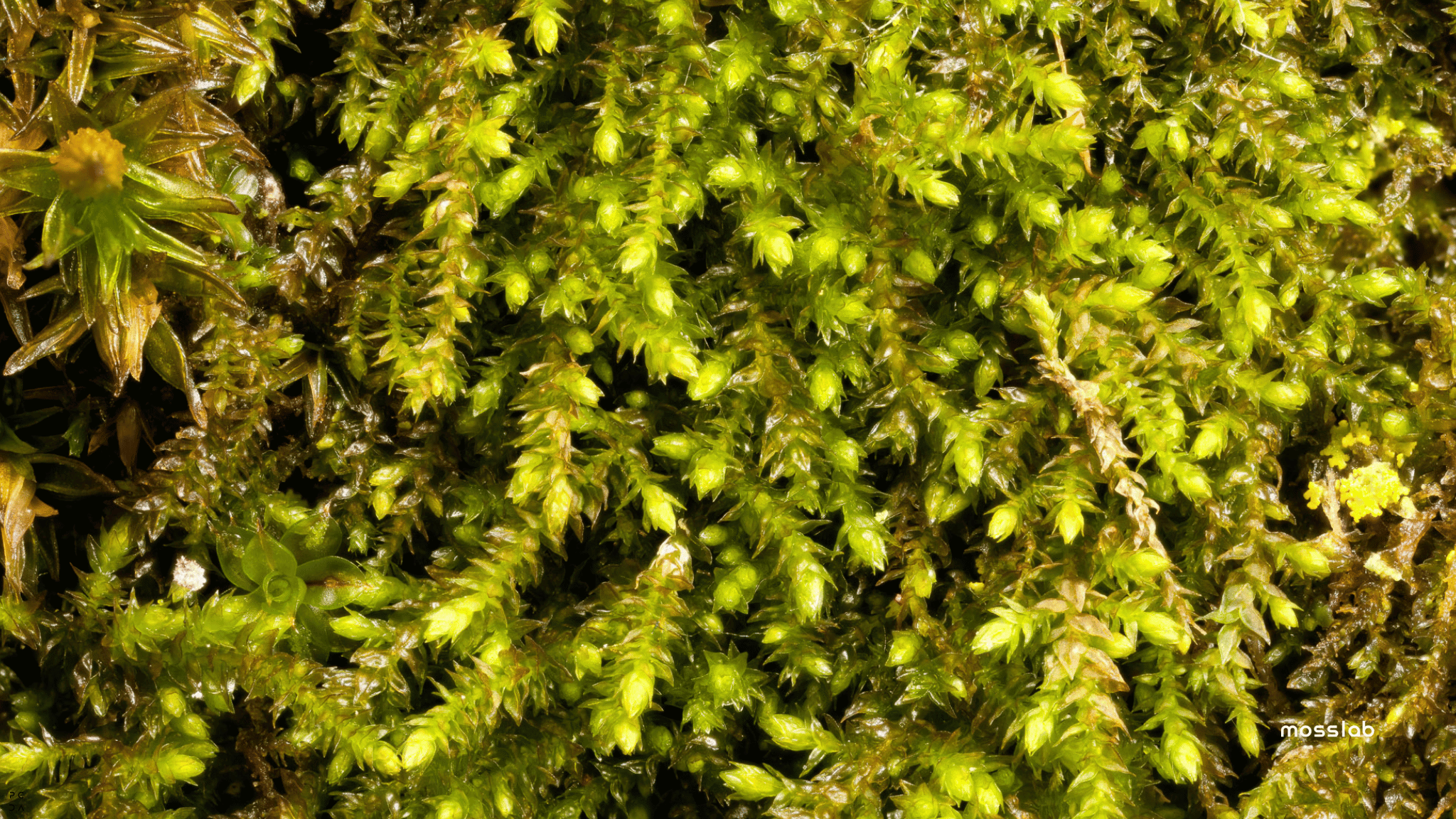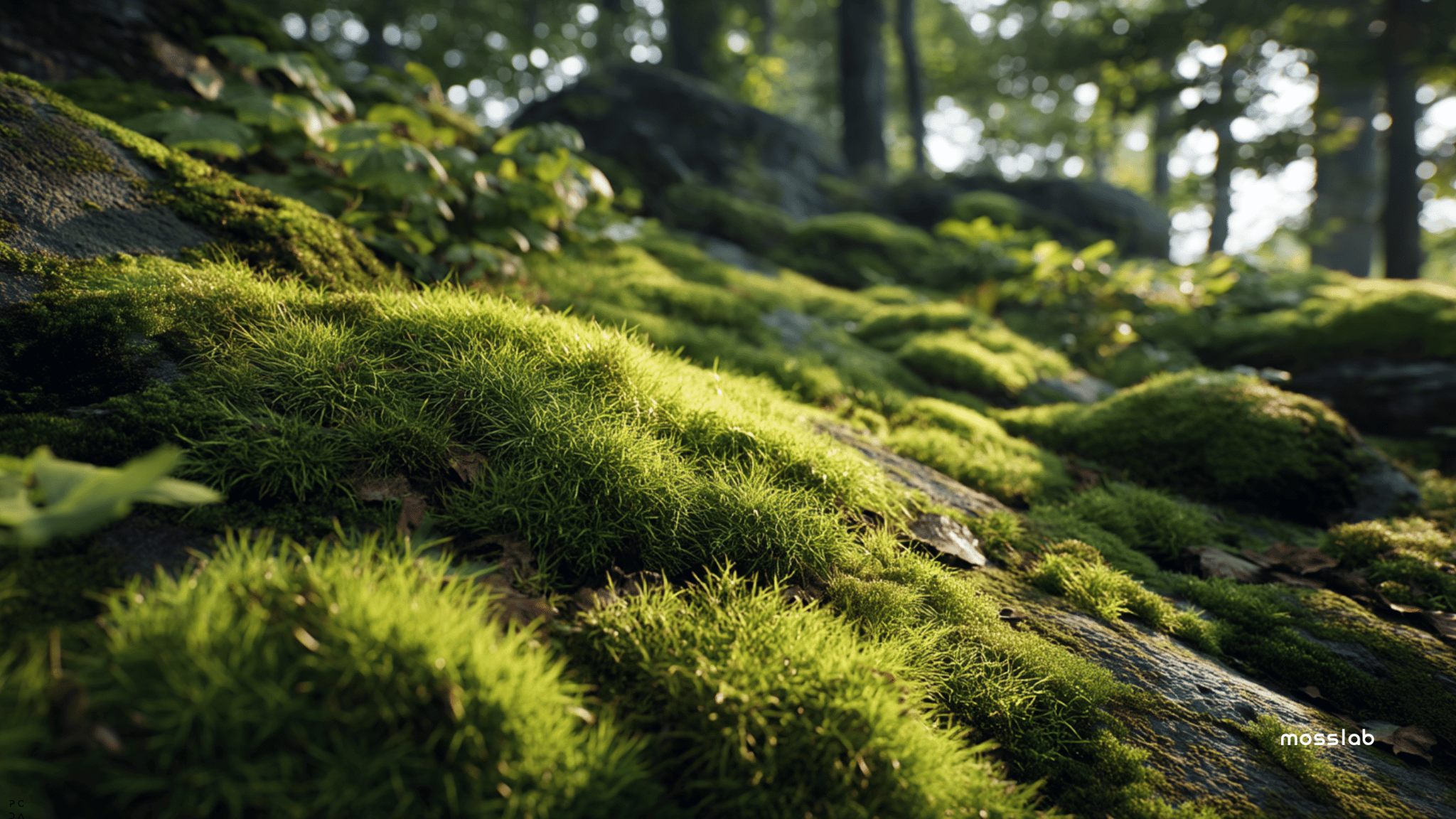Transforming your garden into a lush, green oasis is achievable by incorporating tree mosses. These plants offer visual appeal, support biodiversity, and improve air quality. From tree skirt moss to American tree moss, the diverse moss species available offer distinct advantages and care considerations. Curious to explore more?
Beyond their beauty, tree mosses provide practical benefits such as aiding moisture retention, reducing soil erosion, and enhancing air quality by filtering pollutants. Their dense mats contribute positively to garden ecosystems, supporting a variety of wildlife and maintaining soil health.
By carefully selecting appropriate moss species and maintaining optimal conditions, gardeners can effortlessly create enchanting green spaces that thrive year-round. Tree mosses present an environmentally friendly gardening solution, ideal for both novice and experienced gardeners alike.
Key Understandings

- Tree mosses such as Climacium dendroides enhance garden aesthetics and support small mammals and insects.
- Ideal moss growth requires moist, shaded environments and acidic soil.
- Proper moisture management, mimicking natural rain, promotes moss growing effectively.
- Seasonal debris removal prevents moss diseases and ensures healthy growth.
- Transplant tree moss in spring or fall, maintaining consistent moisture for success.
What is Tree Moss?

Tree moss refers to moss species typically found growing on tree trunks, tree roots, and tree bases. Unlike other plants, most mosses have no true roots but anchor using rhizoids to tree bark or soil surface, forming dense mats that cover large areas, particularly in shady places.
These mosses are versatile, able to grow on diverse surfaces such as rocks, walls, and even grass under the right conditions. Typically bright green or mid green, tree mosses thrive by absorbing moisture and nutrients directly through their stems, making them unique among garden plants.
Popular tree moss species include Climacium dendroides (tree skirt moss) and Polytrichum commune (haircap moss), each known for distinct growth patterns and habitats. Their attractive appearance and ecological benefits make them highly desirable in various garden landscapes.
Does Tree Moss Only Grow North?
Tree mosses are widely distributed, mostly thriving in the northern hemisphere, including the British Isles. While common species like American tree moss are familiar plants in northern climates, certain mosses also adapt to other regions, provided conditions like damp ground and shade are met.
Contrary to popular belief, mosses are not exclusively northern plants; they are capable of thriving in diverse climates around the world. Their adaptability allows them to flourish in different habitats, from temperate regions with heavy shade to tropical zones with consistent moisture.
Understanding local climate conditions such as moisture, sunlight, and soil composition is key to successful moss cultivation, allowing gardeners across various geographical areas to enjoy the benefits and beauty of tree mosses.
Is Tree Moss Safe?
Tree moss is safe for gardens, beneficial for soil erosion control, and supports habitat diversity for small mammals, insects, birds, and even water bears (tardigrades). Its bright green or mid green appearance makes it aesthetically pleasing, and it's harmless to humans and pets.
Moss provides critical ecological functions by creating habitats, reducing soil runoff, and contributing positively to biodiversity. Its non-toxic nature ensures a safe environment for children, pets, and wildlife, making moss ideal for residential gardens and public spaces alike.
Gardeners often prefer moss over grass in shaded areas because it does not require chemical fertilizers or herbicides, further promoting garden safety and environmental health. Its low-maintenance nature also minimizes human intervention, reducing potential harm or disturbances.
How Fast Does Tree Moss Grow?
Moss growing speed varies by species, typically spreading slowly over moist soil and tree bark. Primary stems elongate gradually, and moss covers ground steadily over months or years, thriving best under consistent moisture, shade, and slightly acidic soil.
Regular watering that mimics natural rainfall can expedite moss growth, although it remains relatively slow compared to other plants. Optimal growth conditions, including adequate shade, consistent moisture, and acidic soil, enhance its gradual spread and density.
Patience and proper garden management practices are essential, as moss growth can range from a few months to several years depending on the species and environmental factors. However, the aesthetic and ecological rewards of cultivating moss gardens are well worth the time invested.
Popular Types of Tree Mosses for Your Garden
Popular garden moss species include Climacium dendroides, known as tree skirt moss, and Polytrichum commune, or haircap moss. Climacium dendroides forms feathery growth on tree bases and damp ground, ideal for shady areas. Haircap moss adapts to drier, acidic conditions, offering versatility in garden design.
Other noteworthy species include Dicranum scoparium (broomfork moss) and Leucobryum glaucum (cushion moss), each favored for unique visual textures and growth characteristics. Their adaptability to varying garden conditions allows gardeners to diversify their landscapes effectively.
Careful selection and strategic placement of these moss species not only beautify garden spaces but also significantly enhance the ecological value of gardens by supporting diverse wildlife and maintaining soil stability and health.
Cushion Moss: Characteristics and Care
Cushion moss (Leucobryum glaucum) is admired for its thick, vibrant, bright green mats that resemble soft pillows. It thrives in moist, shaded habitats and adapts moderately well to drier conditions, making it versatile for garden use.
Maintenance of cushion moss involves simple yet crucial tasks such as ensuring consistent moisture levels without waterlogging and regularly removing debris. This care ensures the moss remains lush and healthy.
Besides visual appeal, cushion moss acts as a natural mulch, helping suppress weeds, conserving moisture, and protecting soil integrity. Its dense mats also offer habitat and nourishment to small wildlife.
Haircap Moss: Features and Maintenance
Haircap moss, scientifically known as Polytrichum commune, features unique upright growth and distinctive spore capsules. This moss thrives best in partial shade with acidic soils, enhancing garden landscapes significantly.
Effective maintenance involves balanced moisture management, as excessive water can damage the moss, while inadequate moisture can lead to drying out. Regular debris removal is necessary to allow light and airflow to reach the moss effectively.
Haircap moss's robust structure adds visual interest to gardens, making it a standout choice for landscaping. Its adaptability to various garden settings further enhances its popularity among gardeners.
Ideal Conditions for Growing Tree Mosses
Tree mosses require specific conditions to thrive: shade, moisture, and acidic soil. Optimal pH levels range between 5.0 and 5.5, ensuring maximum nutrient absorption through moss stems.
Avoid direct sunlight exposure to prevent drying, and maintain consistent humidity through regular watering that mimics natural rain conditions. Properly draining soil is essential to avoid water stagnation, which can harm moss health.
By replicating natural habitats, gardeners can successfully cultivate healthy, vibrant tree mosses that enhance their garden landscapes aesthetically and ecologically.
Moisture Management for Healthy Moss Growth
Managing moisture effectively is crucial for moss health. Moss absorbs water through its stems, so maintaining consistent moisture without flooding is essential.
Automated irrigation or regular misting mimicking natural rain is beneficial, particularly during dry periods. Proper moisture management prevents both dehydration and rot, promoting moss longevity.
Monitor weather patterns and adjust watering accordingly, ensuring your moss garden remains vibrant and healthy throughout all seasons.
The Role of Tree Mosses in Soil Health and Erosion Control
Tree mosses significantly contribute to soil health by reducing erosion, anchoring soil surfaces, and enhancing moisture retention. They help stabilize slopes and reduce runoff during heavy rains.
Moss also provides critical habitats for numerous organisms, thereby supporting biodiversity within gardens. Its dense growth fosters a stable, nutrient-rich environment beneficial to other plants.
By enhancing air quality and stabilizing soil, tree mosses represent a sustainable gardening solution that enriches garden ecosystems while requiring minimal maintenance.
Seasonal Debris Removal and Its Importance
Seasonal debris removal is crucial for maintaining healthy moss gardens. Leaves and organic material accumulation can inhibit moss growth, block sunlight, and lead to mold growth.
Clearing debris in the fall and spring helps maintain ideal conditions, ensuring moss receives adequate airflow and sunlight. Gentle removal methods preserve moss integrity, avoiding damage to delicate rhizoids.
Regular debris management promotes robust moss growth, enhancing garden aesthetics and ecological function simultaneously.
Transplanting Tree Mosses: Tips for Success
Successful moss transplanting requires careful planning, ideally conducted in spring or fall. Ensure new sites replicate original shade, moisture, and soil conditions closely.
Carefully relocate moss patches without damaging rhizoids, pressing gently into moist, acidic soil. Regular watering during establishment guarantees successful adaptation and growth.
Monitor transplanted moss regularly for signs of stress or drying, adjusting care as necessary to support long-term health.
Enhancing Garden Aesthetics with Tree Mosses
Incorporating moss into gardens significantly enhances visual appeal, creating serene, lush landscapes. Moss provides unique textures and rich colors, contributing to calming garden atmospheres reminiscent of traditional Japanese gardens.
Strategically placing tree mosses such as Climacium dendroides around tree bases, shaded walkways, or garden borders enhances natural beauty, transforming ordinary gardens into peaceful retreats.
Minimal maintenance combined with high ecological value makes mosses ideal for aesthetically pleasing, sustainable gardening solutions suitable for any landscape design.




